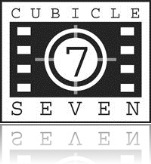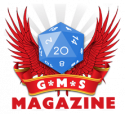I have always been into comic books. I used to read my brother’s Amazing Spiderman, Fantastic Four and many others when I was little (I learned to read at age 4 and by age 5 I had read all the Brother Grimm’s tales). I absolutely adored playing with my brothers and my friends pretending to be super heroes saving the world. Basically, I LOVE them.
In the 90’s, when I was still living in Spain and playing RPGs three or four times a week, Superheroes Inc. came out. A Spanish written game which was truly excellent. The Cyber Alkaline Avenger used his armour to bring plenty of baddies to justice. I was a super hero!
However, after that, my experience with super heroes RPGs hasn’t been good. The following games I ever tried just didn’t grab me. None conveyed the sense of power and might that I would expect from a super hero game.
So I gave up.
Then I saw in January, Wild Talents 2. Never heard of Wild Talents before, but this one is published by Cubicle 7 and it looked gorgeous. Me, being like a Jackdaw, saw something shiny and had to have it. The fact that Kenneth Hite was in the credits was the icing on the RPG Cake that I had to have and eat.
![runner_1680x1050[1] runner_1680x1050[1]](https://www.gmsmagazine.com/wp-content/uploads/runner_1680x10501.jpg) Boy I am pleased I did!
Boy I am pleased I did!
Let’s start with the book itself. Hard-cover and 384 pages of quality paper. The printing is top notch with colourful and vibrant illustrations that fit the content around them to perfection. The way all the ornaments have been subtly tailored to each chapter is a very nice touch that comes to show how much thinking has gone into this book.
However, the book design hasn’t been well thought, at all. There are a two things that really got me annoyed throughout. For starters the amount of references to another pages is staggering. You read about something or something in the book, and there will be 7 or 8 references to other pages much deeper into the book. Try to read where the references are taking you, but because you still don’t know enough about the system or the setting, they don’t mean a lot. Annoying!
Secondly, insets will be placed in the middle of sections and, by being situated at the start of the page, it will cut off a paragraph in mid-sentence. Annoying!
Maybe if you’re reading the paper book it will be easier, but when you’re reading the PDF from a tablet like I did, flicking pages is not as easy and this sort of thing should be avoided. It also matters if, like me, the reader is dyslexic and need a flow of reading to get the full content of what we’re reading.
However, this is all I have to say about this game that annoyed me.
The Rules
The ORE system is a joy. I wouldn’t recommend it to newcomers to the hobby, but it is a terrific system.
You only need one roll of the dice to get all the information you need to perform any action. To achieve that, you build a pool of 10 sided dice based on the amount of dice allocated to each ability or skill. The number of dice with the same number is your width, the number on the dice, the height. Roll high numbers and you’ll be performing better than a player with lower numbers. Roll many dice of the same number and you will have a good chance to do better than someone with a better height but less width.
Some of your dice will be hard dice, which are allocated a 10 automatically, and some dice will be wobble dice, which have whatever value you want to allocate them. Basically hard dice boost the height and wobble boost either.
The draw-back of using hard dice? You’re using your power to the full extent of its power. So if you want to hit someone to knock him/her unconscious and you use your hard dice, you could kill that person. Same goes for shooting, etc.
So the good thing is that you can use a single roll to determine everything, from initiative to damage. The drawback of such system is that it takes a fair amount of experience to interpret the rolls and it also needs a fair amount of cooperation between the players and the GM to resolve situations quickly.
Once mastered, though, the system is a joy to play with. And, if the group you play with is cohesive and experienced, that won’t’ take more than a few rolls.
The Powers
![progenitor_atlantis_1280[1] progenitor_atlantis_1280[1]](https://www.gmsmagazine.com/wp-content/uploads/progenitor_atlantis_12801.jpg) This probably the most confusing part of the book, and the one that will take longer to master. However, it is not a bad thing and the reason is that the super powers, or Talents, system is so well thought that you will be able to create anything, from a vigilante to a god.
This probably the most confusing part of the book, and the one that will take longer to master. However, it is not a bad thing and the reason is that the super powers, or Talents, system is so well thought that you will be able to create anything, from a vigilante to a god.
Characters are generated on a number of points allocated. From a “weak” character created with 200 points, to a god-power character generated with 700.
The talents can be modified to match what sort of character you want to have. For example, say you want someone who is extremely strong, but you’d like the punches to do fire or electricity damage. Just add the type of damage on top of it and that’s that. You don’t want the damage to be fire based all the time?… add that to your fists and now you can switch that on and off.
The difficulty is that to get to grips with a system that is so flexible can be rather tough. It’s like going to a buffet with 30 different dishes and each dish can be cooked in 5 different ways. You can be totally sure you’ll get to eat something you’ll like a lot, but it will probably take you a while to decide on what to eat and how.
The Setting
Following the flexibility of the powers system, the setting chapter starts with a very detailed section on how to create your own setting.
A way to base your setting based on colours gives way to what I can only call a thesis on world creation. If this part of the book was elaborated upon, it could be a full book by itself. Many articles and books have been written about the subject, but none I have read that dissects the world elements to this point. If you’re the type of player who rather runs adventures written by others, then this part won’t be of much use to you. However if you’re the sort of person who has had ideas for a world to play in in your head, I can promise you this will help.
Of course this would be totally useless for someone without the time or inclination to create a world, so a full setting is offered, created following the guidelines in the chapter. And what a world it is!
The chronology takes us from the start of the Talents to the present day. An alternative history, with enough real-life elements to make it very familiar, and enough fantastic elements to make it truly interesting to play. With conspiracy theories, political unrest, government involvement, alien invasions… Everything is there.
The setting ends with character sheets for every major figure mentioned in the chronology, providing with a wonderful pool of pre-gen allies and antagonists ready to be used, and, almost as importantly, helping to make sense of the events described. It puts things into perspective when you read that someone has destroyed the Eiffel Tower, and then, reading his powers, realising how powerful he actually was and what powers he used.
This is the part of the book I truly didn’t want to end.
Appendixes
This caught me by surprise, I must admit. The last part of the book is a series of appendixes about how to play and how to run role playing games, and they’re actually very, very good.
Even if you’re a seasoned player and GM, there is good advice here worth reading. If anything to get ideas on campaign planning and how to deal with problematic player, how to handle a power gamer and many others.
All in all, a good addition to the book that makes for a great read.
Conclusion
I really love this game, even though it’s not for everyone and beginners will have a tough time getting the most out of it.
However, the mechanics are truly fantastic with plenty of room for interpretation of the dice, utilisation of the powers and skills and speed of combat and resolution. I could see myself utilising those mechanics in investigative games or games where applying various skills at the same time is a common feature.
It’s a shame that the book organisation lets it down, making it very difficult to read at times, but the lush illustrations and the clever ability of Kenneth Hite to produce believable worlds makes this as much a great game, as a great thesis on how to design great games.
Even if you’re never going to play this game, it’s worth getting just for those two features. Thus, I will give this 4 stars out of 5, falling short of the 5 for the lack of thought when organising the book content.
Wild Talents Second Edition is available from:
 | ![arclogo[1] arclogo[1]](https://www.gmsmagazine.com/wp-content/uploads/arclogo1.gif) |

![wt2-cover[1] wt2-cover[1]](https://www.gmsmagazine.com/wp-content/uploads/wt2-cover1.jpg) By
By